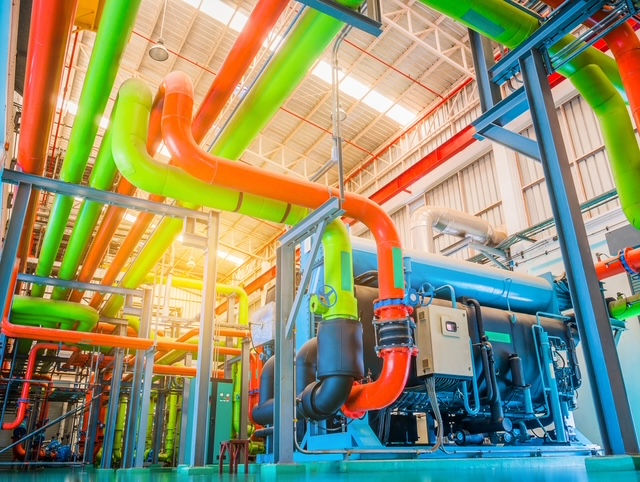Understanding Cavitation vs. Aeration in a Chilled Water System
- MSC
- Jan 24, 2024
- 2 min read

Cavitation and aeration are often confused phenomena. The symptoms of the two conditions are somewhat similar, and at times, they can exist simultaneously. It is important to understand the differences between cavitation and aeration, how to recognize them, and their possible causes.
What is Cavitation?
Cavitation is the formation and collapse of vapor cavities in a liquid that occurs due to changes in pressure. When pump demand exceeds what can be delivered, low pressure causes air to be pulled out of the liquid, causing bubbles to form at the eye of the impeller. As the liquid moves toward the discharge side, the increase in pressure causes the cavities to implode, generating repeated shockwaves that violently strike the impeller and other pump components.
Cavitation can cause a variety of problems, including poor pump performance, pitting and erosion of the impeller, damage to the shaft, bearing, and seals, increased power consumption, and, ultimately, pump failure.
Telltale signs of cavitation are excessive noise and vibration. Sounds produced by imploding cavities are often described as rhythmic knocking or banging, or as a steady high-pitched whine.
Among the common causes of cavitation are:
Clogged suction strainers or filters
Plugged breather vents
Piping blockages
Low fluid levels
Excessive drive speed
Poor piping design
Low oil temperature
What is Aeration?
Aeration is a condition that occurs when air infiltrates hydraulic fluid via the suction side of a pump and mixes with or dissolves into the fluid. The presence of air degrades the fluid and can cause slowed response, overheating, loss of control, component wear, and cavitation.
Aeration often results from:
Leaking suction lines
Misaligned or loose couplings
Failed shaft seals
Reversed shaft rotation
Low fluid levels
The primary symptom of aeration is unusual noise. These sounds are similar to those present in cavitation but more erratic, with irregular whining often accompanied by rattling or noises akin to gravel circulating in the pump.
Conclusion
By understanding the unique drivers behind cavitation and aeration, chiller system operators can more readily identify issues and take appropriate action when they occur. For more information regarding cavitation, aeration, and chilled water systems, please call MSC at 973-884-5000.




Comments